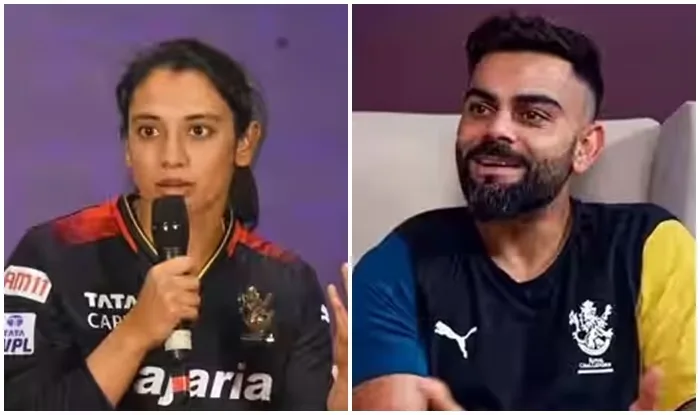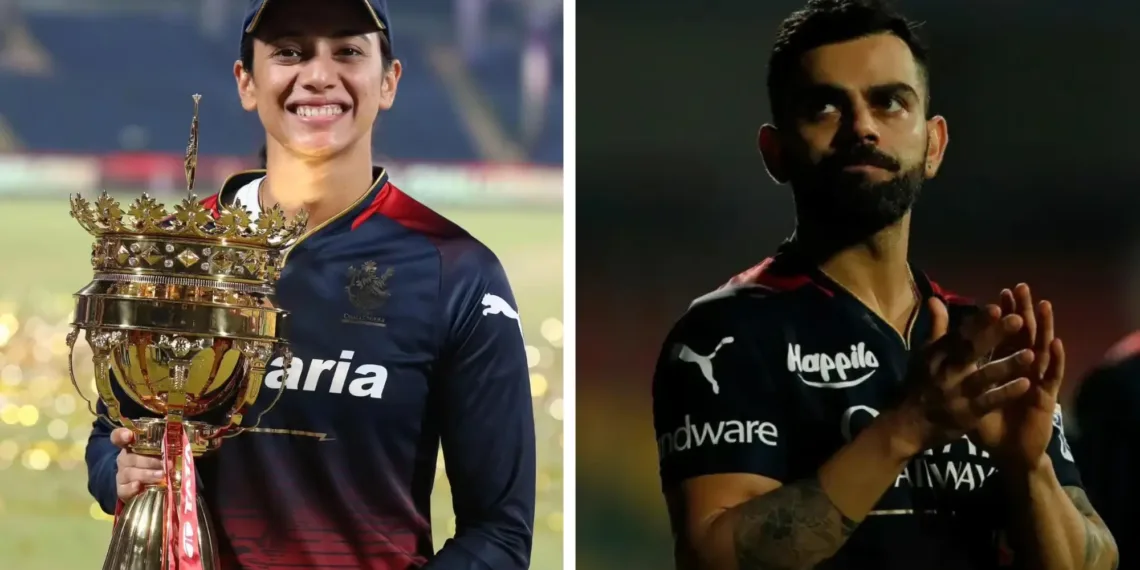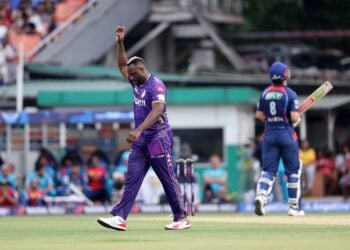Smriti Mandhana made history as Royal Challengers Bengaluru’s first-ever trophy-winning captain, lifting the WPL 2024 title. Meanwhile, Virat Kohli recently ended RCB’s IPL trophy drought in 2025 after 17 years. But how do these two RCB legends compare in their initial 26 matches? The numbers reveal a fascinating story.
Table of Contents
RCB’s Head-to-Head Statistical Comparison
| Category | Smriti Mandhana (WPL) | Virat Kohli (IPL) |
|---|---|---|
| Matches Played | 26 | 26 |
| Total Runs | 646 | 361 |
| Batting Average | 24.84 | 17.19 |
| Strike Rate | 128.68 | 105.56 |
| Half-Centuries | 4 | 1 |
| Highest Score | 81 vs DC | 50 vs Deccan Chargers |
| Wins Contribution | 368 runs in 11 wins | 156 runs in 11 wins |
Breaking Down the Numbers
Run Accumulation Victory: Smriti Mandhana’s 646 runs significantly outpace Kohli’s 361 from their first 26 RCB appearances. This 285-run advantage reflects her consistent opening role versus Kohli’s early-career middle-order position.

Strike Rate Superiority: Mandhana’s explosive 128.68 strike rate showcases modern T20 aggression, outshining Kohli’s 105.56 from the 2008-2010 era. Cricket’s evolution toward faster scoring is evident here.
Fifty-Plus Consistency: With four half-centuries compared to Kohli’s lone fifty, Mandhana demonstrates remarkable conversion ability. Her best of 81 against Delhi Capitals exemplifies her match-winning capability.
Performance Under Pressure
Both legends featured in exactly 11 RCB victories during their first 26 matches—an interesting coincidence. However, Mandhana’s impact in winning causes stands out dramatically:
- Mandhana in Wins: 368 runs at 33.45 average, 135.29 strike rate, 3 fifties
- Kohli in Wins: 156 runs at 19.50 average, 117.29 strike rate, 0 fifties
Smriti’s ability to convert starts into substantial contributions during victories demonstrates exceptional pressure handling—a hallmark of elite captaincy.
Context Matters: Era and Role Differences
Batting Positions: Mandhana’s opening role provides more scoring opportunities compared to Kohli’s early middle-order responsibilities. Openers typically face more deliveries and accumulate larger totals.
Tournament Evolution: The WPL benefits from 15+ years of T20 tactical advancement since IPL’s 2008 inception. Higher scoring rates and aggressive batting philosophies have become standard.
Career Trajectories: Kohli’s first 26 IPL matches represented his developmental phase (ages 19-22). He later transformed into cricket’s most consistent T20 run-scorer with 8,661 IPL runs. Mandhana, conversely, arrived at WPL as an established international star.

For deeper insights into Indian cricket statistics and analysis, explore our comprehensive player comparison series.
The Trophy Factor
Both have etched their names in RCB folklore as championship-winning contributors. Smriti’s 2024 WPL triumph preceded Kohli’s long-awaited 2025 IPL victory, with both proving instrumental to their respective successes.
Their retained status—Smriti at ₹3.5 crore and Kohli as franchise icon—reflects RCB’s commitment to building dynasties around proven match-winners.
Stay updated with IPL 2026 team strategies and WPL developments as both legends chase more silverware. The official BCCI website provides real-time tournament updates and exclusive content.
Frequently Asked Questions
Q: Why did Smriti Mandhana score more runs than Virat Kohli in their first 26 RCB matches?
Smriti’s opening position provided more batting opportunities compared to Kohli’s middle-order role during his early IPL years (2008-2010). Additionally, modern T20 cricket emphasizes aggressive scoring from ball one, reflected in higher run rates and totals. Mandhana also entered WPL as an established international player, while Kohli was developing his skills in his late teens.
Q: Who had better match-winning impact in their initial RCB phase?
Smriti Mandhana demonstrated superior match-winning impact with 368 runs at 135.29 strike rate in victories, including three half-centuries. Kohli’s 156 runs in wins, while contributing, lacked the consistency of big scores. However, Kohli’s subsequent IPL career (8,661 total runs) proves early statistics don’t define ultimate legacy. Both eventually delivered championship-winning performances for RCB.








